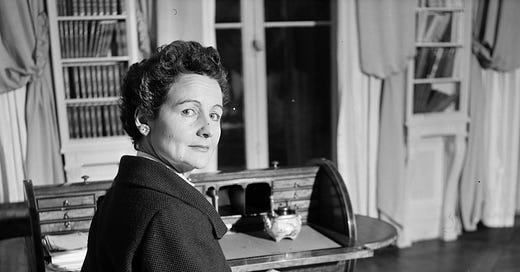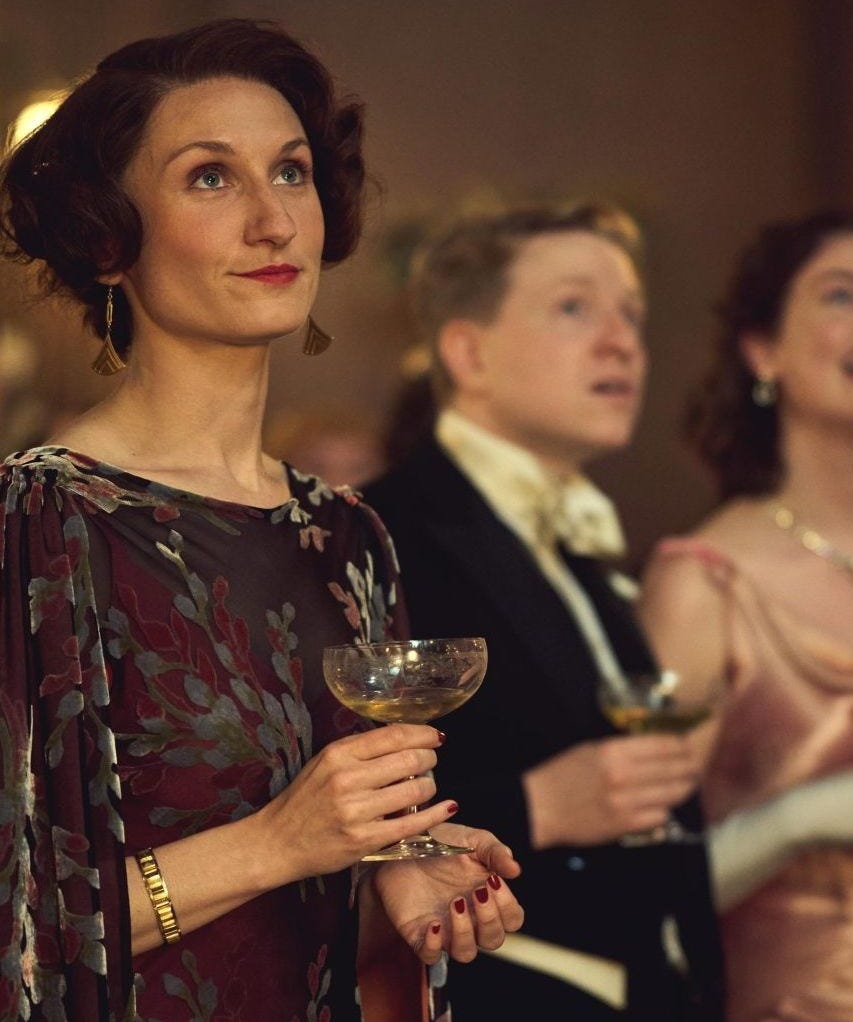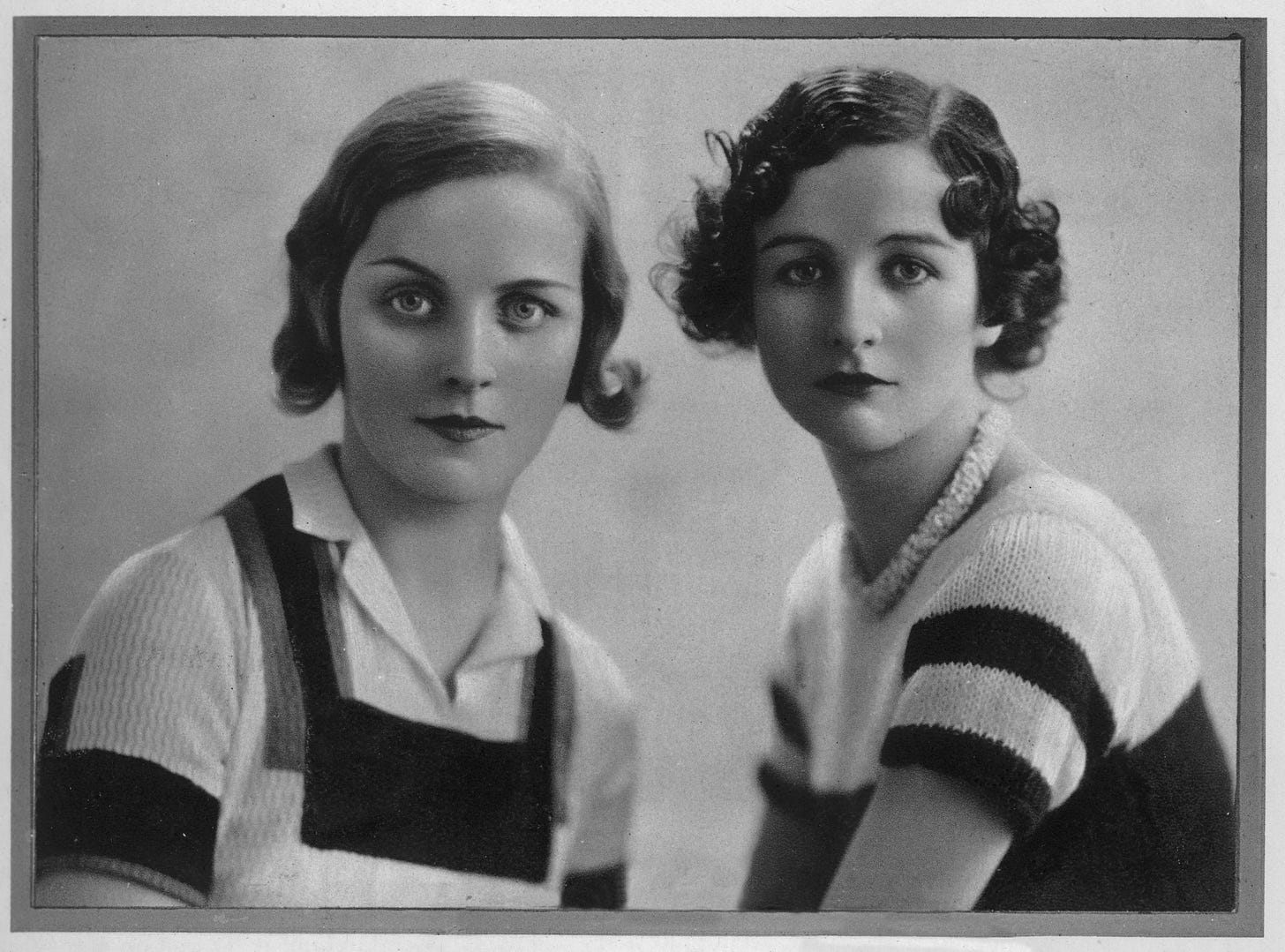So my recent post about Lord Peter Wimsey and Harriet Vane was my most liked/commented on to date (thank you all) and I slid into that top 100 Literature thing at around no. 30 like, I don’t know, Elastica circa 1994, only to go crashing straight out again when I wrote about the not-very-literary Epsom Derby… but if you can’t write what you want on Substack, what’s the point?
Not just what you want, but how you want. If I re-read some of my posts on here, I do sometimes think, yes, OK, it might have been better if you had calmed down a bit… and that isn’t remotely funny although you obviously thought it was at the time… but one learns. And the fact is that I was (still am) slightly high on the liberation of knowing that there is no hovering copy-editor on Substack, waiting to pounce upon my semi-colons (I have no idea why these are so mal vu) and demanding an explanation ‘for the reader’ of a kindergarten expression like mal vu.
Which takes me, as so often, to our beloved Nancy Mitford.
This is Mitford week. The first episode of Outrageous (Bessie Carter as Nancy above), the six-part show about the real lives of the family, is out on Thursday, and doubtless it will set off a new Mitford mania (‘Which Mitford are You? When styling an outfit, do you choose: a) a black shirt…’) alongside a new bunch of miserabilists determined to condemn them as mad poshoes who should be consigned to a metaphorical Cotswolds oubliette.
Whatever one thinks of them en masse, however - and to me they are one of the most fascinating phenomena of the twentieth century - the first among them is Nancy; and Nancy is a phenomenon all of her own. A writer like no other, with an unpredictable wit, a sublime directness, a gift for poignancy, an enigmatic femininity and an inimitable authorial voice, she is the creator of at least two imperishable masterpieces and the architect of the Mitford myth, whose quality of enchantment is really what has kept the whole thing going.
Quite remarkably, I have never really known a woman who did not adore Nancy; although I did once spend an afternoon with her sister Diana, whose feelings were shall we say mixed.
I had met Diana in order to talk about Nancy, who some twenty years ago was the subject of my first biography; and this brings me back to editors, because there was a great contretemps with one about the opening paragraphs of my book, from which I quote here.
The little grave at Swinbrook church is a sad sight now. One searches for many minutes, eyes wandering over the whiter tombstones, and the shock of finding it is considerable. Can this possibly be right? It is like a grave from two hundred years ago: the grave of a forgotten and anonymous person, of a poor serving girl who died alone and unlamented. It is covered with the thick damp lace of greenish moss, and there are no flowers.
On it are written, in plain script barely legible beneath the decay, the words: Nancy Mitford, Authoress, Wife of Peter Rodd, 1904–1973. Above the words is carved a strange fat animal, which is in fact a mole taken from the Mitford family crest. Nancy disliked the sign of the cross because she thought it a symbol of cruelty. So her sister Pamela, also buried in Swinbrook churchyard, chose for her the mole, a neat eccentric image that in later life was embossed on Nancy’s writing paper. An aunt of hers wrote to say how much she loved the letterhead: ‘your charming little golden cunt (Glostershire of my young days for moles, few people now know what it means).’ ‘She’s not in the Tynan set,’ Nancy had remarked. Beneath the earth, then, she may be laughing: her favourite thing in the world.
Now what, might you imagine, would be the problem here? A problem so towering, so terrible, so literary-world-shattering, that my editor was reduced to a state of angry venomous tears when I refused to give way about it?
The problem was the ‘c’ word. Not a word I use, incidentally (although I am quite a fan of eff), but in this context I thought it was both fun and funny. However: the book’s copy-editor, a sort of Barbara Pym character without the saving grace of being created by Barbara Pym, had gone scuttling off to my editor to say that it would undoubtedly upset ‘the reader’, whom she clearly saw in her own image, to be confronted - and on the very first page - with the word. It might be all right later in the book, when readers had grown accustomed to my ways and were sufficiently cushioned by mentions of chubb-fuddling, Hons’ Cupboards and other such Mitfordiana, but on the first page - no.
To this woman I was Withnail in Miss Blenner-Hassett’s tea-shop, which was slightly flattering but monumentally ridiculous; nevertheless my editor took the copy-editor’s side and never forgave me for standing firm.
Keep reading with a 7-day free trial
Subscribe to Laura Thompson’s Substack to keep reading this post and get 7 days of free access to the full post archives.








